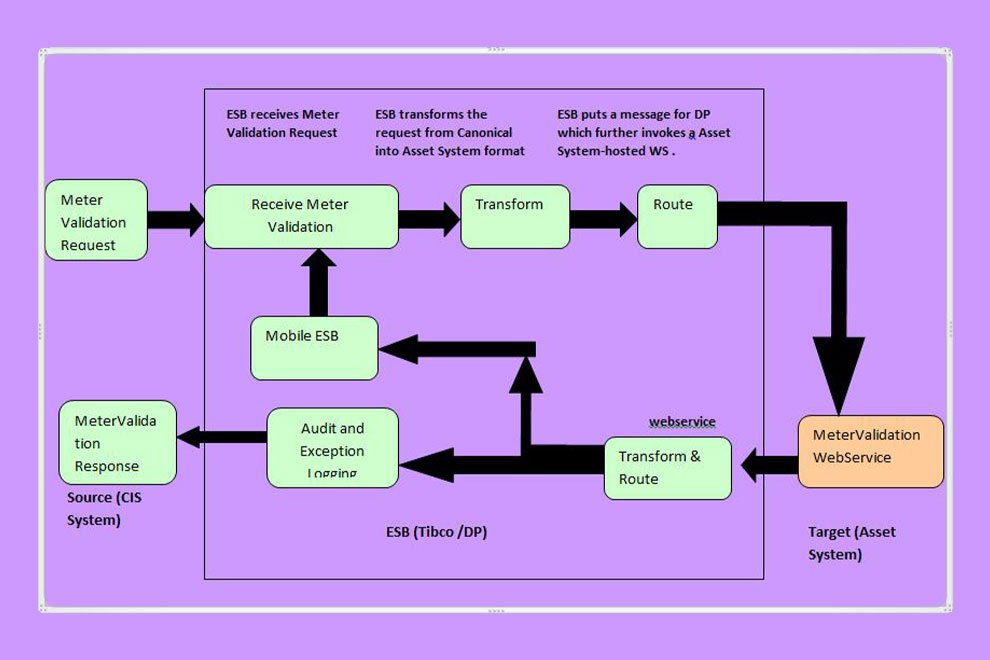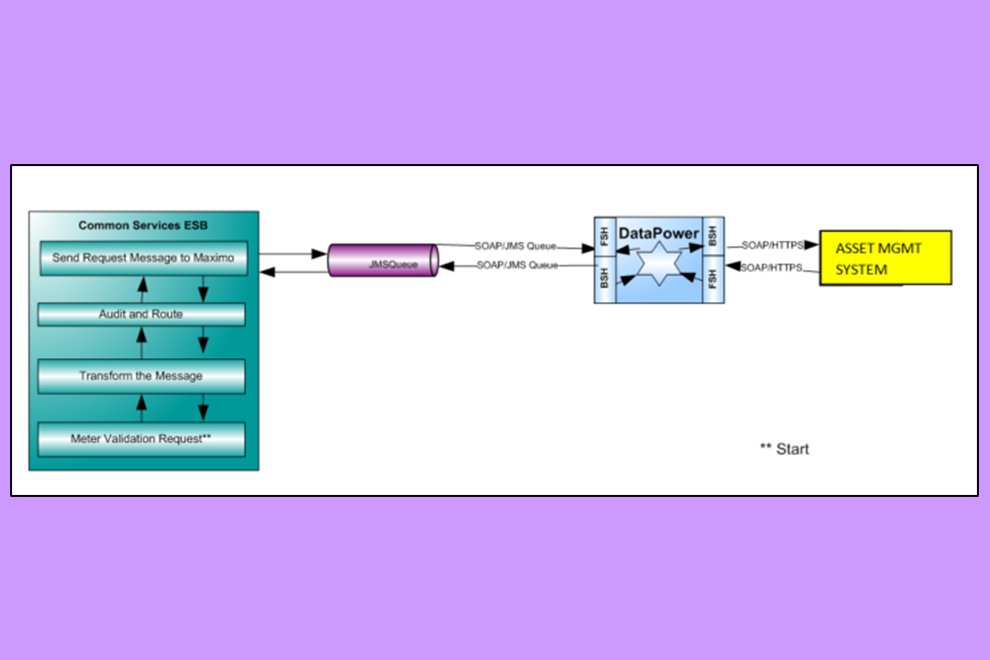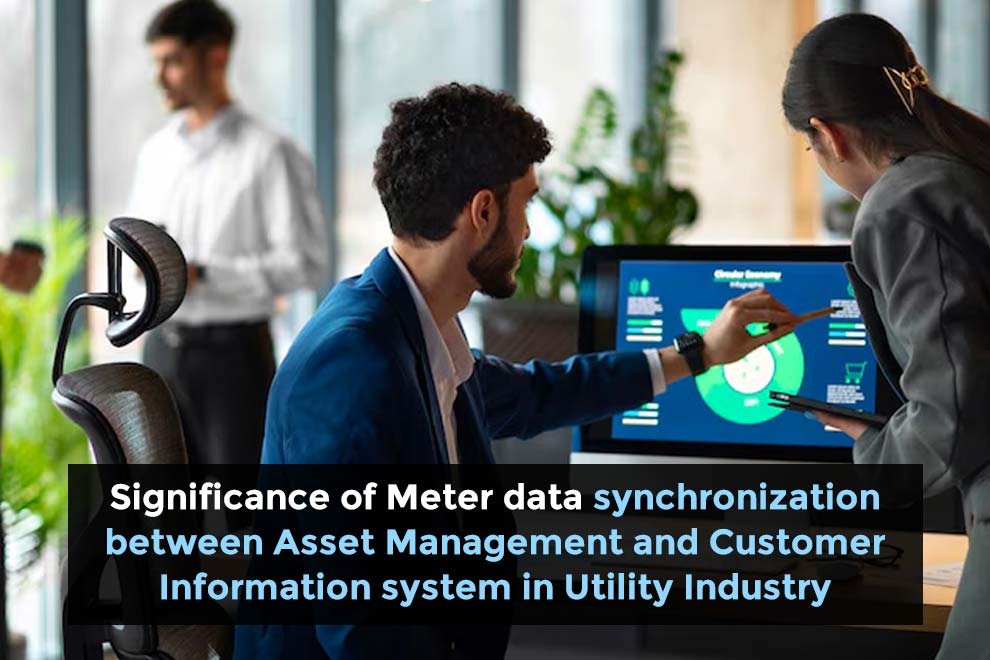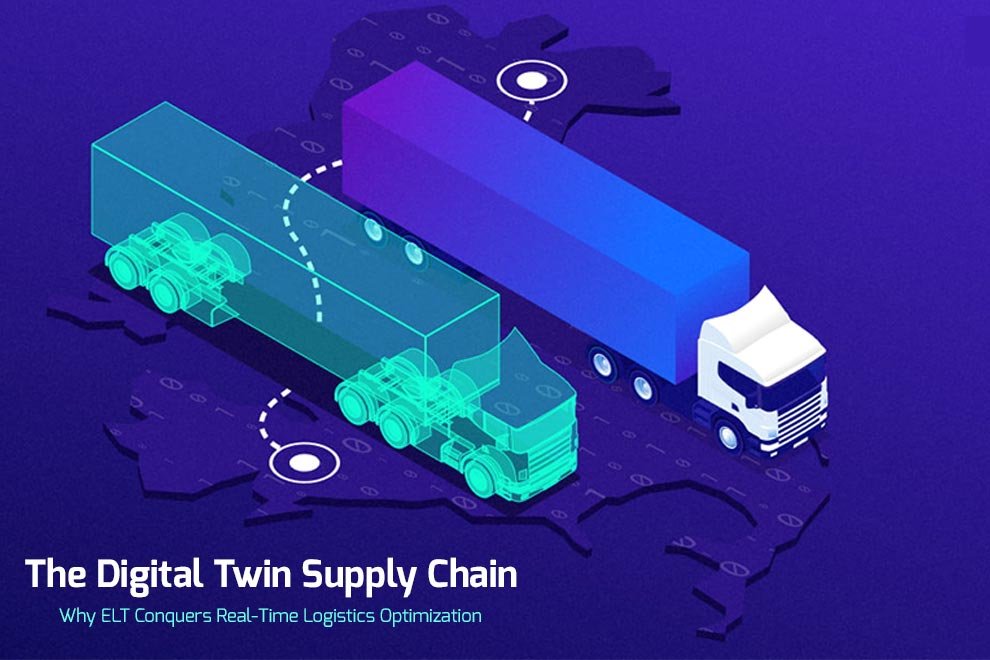Posted on August 02, 2023
For CIS/Field Activity (FA) to perform meter-related tasks, such as installation, removal, exchange, or status change, the meter must be validated against the meter asset master data stored in the Asset Management System. Once the meter passes validation, a list of meter attributes used for billing calculations must be transferred back to the CIS system, allowing it to create or update the meter in its system.
This article outlines the meter validation integration between the CIS system and the Asset Management System. Specifically, it details the integration triggering points from the CIS system and the validation rules implemented in the Asset Management System.
In the utility industry, the synchronization of meter data between Asset Management Systems (AMS) and Customer Information Systems (CIS) has emerged as a pivotal element driving operational excellence and improving customer experience. As utilities face increasing pressure to optimize efficiency, reduce costs, and meet regulatory demands, the integration of these two systems offers a transformative solution that empowers organizations to enhance their overall performance. This article explores the profound significance of meter data synchronization between AMS and CIS, its far-reaching benefits, and how it is shaping the future of utility operations.
1. Enabling Accurate Billing and Revenue Assurance
One of the core functions of any utility company is to ensure accurate billing, which directly impacts its revenue cycle. The Customer Information System (CIS) relies on precise data from the Asset Management System (AMS) to generate customer bills based on actual energy consumption readings. Without synchronization, discrepancies between the data in both systems can lead to errors in billing, resulting in either under billing or overbilling.
Meter data synchronization ensures that the readings captured by the meters in the AMS are consistently reflected in the CIS, eliminating any potential discrepancies. This results in:
- Accurate Billing: Customers are billed according to the exact amount of energy they consume, based on real-time data from meters, reducing customer complaints and improving trust in the billing process.
- Revenue Assurance: The utility can be confident in the accuracy of its billing, leading to improved cash flow and minimized revenue loss due to errors.
2. Improving Operational Efficiency
Synchronization between AMS and CIS eliminates data silos, enabling seamless information flow across the utility organization. In a traditional setup, discrepancies or delays in updating meter data can lead to inefficiencies in both customer service and asset management.
With synchronized meter data:
- Streamlined Processes: Automated data updates between the two systems ensure that the most current information is always available. This significantly reduces the need for manual data entry and data reconciliation efforts, leading to faster operations and less room for human error.
- Optimized Workforce Management: With synchronized data, utilities can prioritize maintenance and operational tasks based on accurate consumption patterns and asset performance. This ensures that resources are allocated effectively, improving overall efficiency.
3. Enhancing Customer Service and Satisfaction
Customer expectations have evolved, and utilities are increasingly expected to deliver high-quality, reliable service with minimal disruption. By synchronizing meter data between AMS and CIS, utilities can deliver more responsive and customer-centric services.
- Quicker Resolution of Issues: Customer service representatives can quickly access both customer consumption data and the health of the relevant meters, allowing them to resolve issues such as billing discrepancies or service interruptions more efficiently.
- Proactive Communication: Utilities can notify customers about potential issues (e.g., meter faults or excessive consumption) before they become problems, offering solutions or scheduling maintenance proactively.
4. Detecting and Preventing Fraud
Meter tampering, fraud, and illegal connections are significant concerns in the utility industry, costing companies millions of dollars annually. When data from AMS and CIS are not synchronized, detecting fraud becomes more challenging, as discrepancies between consumption data and meter performance may go unnoticed.
Meter data synchronization aids in:
- Anomaly Detection: By comparing real-time meter data with historical consumption trends, utilities can spot unusual patterns that may indicate fraud or tampering. This early detection helps mitigate the financial impact of fraud.
- Security Enhancements: Integrated systems allow utilities to monitor their assets and customer data more effectively, improving the ability to respond to and prevent fraudulent activity.
5. Optimizing Asset Management and Maintenance
An effective Asset Management System (AMS) is crucial for extending the life of a utility’s assets and ensuring reliability. Meters are vital assets in this context, and their performance directly affects both operational efficiency and customer service.
Meter data synchronization offers several benefits for asset management:
- Proactive Maintenance: By integrating consumption data from CIS with asset health data from AMS, utilities can identify potential issues with meters before they fail. Predictive maintenance reduces the likelihood of service disruptions and extends the life of assets.
- Data-Driven Decision Making: Synchronized data allows utilities to make informed decisions about meter replacements, upgrades, or repairs, optimizing maintenance schedules and preventing unnecessary costs.
6. Ensuring Regulatory Compliance
Utility companies operate in a highly regulated environment, and compliance with industry standards and regulations is crucial. Regulatory bodies require accurate reporting of energy usage, asset performance, and customer billing.
By synchronizing meter data:
- Accurate Reporting: Utilities can generate precise reports that include both asset performance and consumption data, ensuring they meet regulatory requirements for audits, reporting, and compliance.
- Data Integrity: Real-time synchronization of meter data ensures that records are always up-to-date and verifiable, reducing the risk of non-compliance due to outdated or inaccurate information.
7. Enabling Advanced Metering and Smart Grid Integration
The integration of smart meters and smart grid technologies is revolutionizing the utility industry. These technologies provide real-time data on energy usage, allowing utilities to better manage resources, improve grid efficiency, and support demand response programs.
Meter data synchronization is critical for:
- Real-Time Monitoring: With synchronized data, utilities can monitor consumption and grid performance in real-time, allowing for immediate responses to fluctuations in demand or system failures.
- Optimized Grid Operations: Synchronizing meter data with AMS and CIS enables utilities to implement advanced features of smart grids, such as dynamic pricing, load balancing, and demand forecasting, ensuring efficient grid management.
8. Supporting Better Forecasting and Planning
Synchronized meter data provides utilities with a comprehensive view of both asset performance and customer usage patterns. This data is invaluable for:
- Demand Forecasting: By analyzing historical consumption data, utilities can forecast future energy demand more accurately, helping to plan for infrastructure upgrades and capacity expansion.
- Strategic Planning: Access to synchronized data enables utilities to make data-driven decisions about network investments, asset replacement schedules, and resource allocation, leading to more effective long-term planning.
Logical Component Design

Logical Component List
- Asset Management System
- ESB
- Datapower
- CIS System
- Mobile ESB
Sample process flow : Meter Validation
The following diagrams explain the logical design details between all the participating systems. A brief description follows for the systems and the activities that are shown in the diagram.

Sample Request and Response
Request
| Attribute Name | Description | Permissible Values |
|---|---|---|
| SERIALNUM | Meter serial number (9-digit) | |
| MANUFACTURER | Manufacture code (2-char) | |
| PREMISE | Premise value if the meter is on a premise | If Maximo premise (Location.CG_PREMISE) is null Maximo meter status must be in (ST, NT, OB, LT). |
| STATUS | STATUS | |
| KWHMULT | KWHR | Optional ; In ASSETSPEC ASSETATTRID=KWHMULT Needed for MeterType W, D or E |
| DMNDMULT | KW Demand multipliers | Optional; In ASSETSPEC ASSETATTRID=DMNDMULT Needed for MeterType D or E |
| RSC | Responsible Service Center Code (RSC) | Optional;The RSC_TO and ASSET.CG_RESPSERVCENTER (RSC_FROM) would be used to fetch a row from EX3_RSC_TO_FROM mapping table. |
| TYPE | TYPE | |
| VERSION | VERSION | Optional |
Response
| Attribute Name | Description | Permissible Values |
|---|---|---|
| SERIALNUM | Meter serial number (9-digit) | |
| MANUFACTURER | Not Mandatory | |
| METERTYPE | Responsible Service Center Code | |
| CLASSCODE | Meter Class Code | |
| EX3_UOM | Unit Of Measure | A new column EX3_UOM would be added to the CG_PGMIDXREF table. |
| KWHMULT | KWHR | Meter Multiplier Validation: Only supported MeterTypes are W, D or E. If there are any other MeterTypes sent, Maximo would raise an exception. If MeterType = ‘W’ then SO Completion KWHR Multiplier must match Maximo KWHR Multiplier (AssetSpec, where assetattrid = ‘KWHMULT’). If MeterType = ‘D’ or ‘E’ then SO Completion KWHR multiplier must match Maximo KWHR Multiplier (AssetSpec, where assetattrid = ‘KWHMULT’) and SO Completion KW Demand Multiplier must match Maximo Demand Multiplier (AssetSpec, where assetattrid = ‘DMNDMULT’). If MeterType = ‘R’ then follow the short form version of validation. ASSETATTRID=KWHMULT Needed for MeterType W, D or E |
| DMNDMULT | KW Demand multipliers | ASSETATTRID=DMNDMULT Needed for MeterType D or E |
| METERTECH | Meter Technology | ASSETATTRID=AMRTYPE |
| INSTRREAD | Instrument Rated | ASSETATTRID=INSTRATE |
| MTRREMOTECAP | Meter Remote Capability | ASSETATTRID=SVCDISC |
| CG_OWNERSHIP | Device Owner | |
| EXCPTNKW | Exception KW Reading | ASSETATTRID=EXCPTNKW |
| MAXKW | Max KW Reading | ASSETATTRID=MAXKW |
| PHASECODE | Meter Description Phase Code | ASSETATTRID=PHASE |
| METERVOLTCODE | Meter Instrument Voltage Code | ASSETATTRID=METERVOLT |
Conclusion
The synchronization of meter data between Asset Management Systems (AMS) and Customer Information Systems (CIS) is a fundamental component of modern utility operations. It drives operational efficiency, enhances customer service, improves asset management, ensures regulatory compliance, and supports the integration of smart grid technologies. In an era where utilities must manage increasingly complex infrastructures and meet evolving customer expectations, meter data synchronization offers a clear path to improved service delivery and enhanced business performance. For utilities looking to stay ahead in the competitive landscape, investing in this integration is not just a technological upgrade—it’s a strategic necessity.
Also Read: How to Build an Effective Remote Work Management Framework










